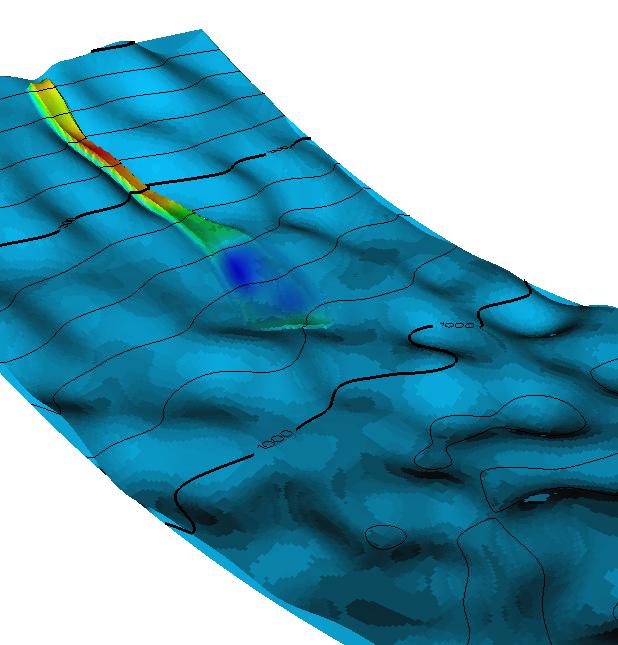TuMod - Integrated Turbidite Modelling
TuMod - Integrated Turbidite Modelling
A Research Project From The University of Bergen And Norwegian Computing Center
The aim of this project is to develop improved methodologies, algorithms, and tools for modelling deep-water reservoirs. NR and our partners have significant previous experience in developing and utilising tools for modelling shallow marine and continental reservoirs and plan to apply a similar, facies based approach to the modelling of deep marine systems.
Modelling procedures will be based upon a novel stochastic-process approach. The depositional process part of the system guides the basic geometry of the facies elements and the stochastic approach is used for flexible conditioning to both well data and seismic data. Model parameters will be based upon existing experience and the wealth of data in the public domain including subsurface, outcrop and modern seabed datasets. Problem focused fieldwork will also be undertaken to address specific geometric issue. Modelling procedures can ultimately be tested against sponsor's proprietary data.

Why a new approach?
Deep marine density currents contain significant volumes of hydrocarbons often with limited well data and very expensive development scenarios. Reservoir modelling of such systems provides a major challenge. While existing object and trend based stochastic modelling approaches can capture some of the heterogenity, the limited quantities of data result in a very broad spread of possible model outcomes. Furthermore such modelling approaches fail to honour the key factors that control the distribution of sand, namely, accomodation, sediment supply and basin topography.
Existing numerical process based modelling tools are computationally expensive and while they capture the fine detail of a single event they are unsuitable for re-creating reservoirs comprised of the accumulated deposits of hundreds or thousands of individual flows. Existing process based modelling tools also fails to honour seismic and well data.
TuMod is a simplified process based modelling tool capable of recreating the flow and deposition of hundreds of flow events. The model accounts for seabed topography, gravity, fluid and surface friction, kinematics, ocean currents, sedimentation and erosion rates. This method is combined with stochastic elements for inclusion of reservoir uncertainty modelling and conditioning to well data.
Concept
TuMod mimics the sequence of deposition and generates the geometry of stacked turbidite events. This is done by generating many individual events and stacking them on top of each other. Intermediate deposition of clay rich material are also modelled. TuMod takes as input a bottom surface (seabbed), well data and various physical parameters describing the physical process generating a turbidite. The picture to the right shows an early concept sketch of two turbidite events with corresponding cross sections.


Example: Synthetical case
A synthetical example with a starting seabed with dip angles from 1-2 degrees at the top and 0 degrees at the bottom results after 30 events in the new seabed shown in the figure to the right. A movie which shows the accumulated result after each event can be downloaded here (881 KB).

Project period
Partners
Additional collaborators:


